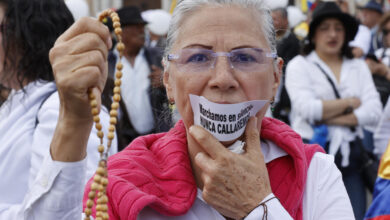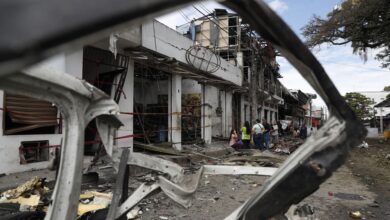73% of women journalists have suffered online harassment related to their work.

The Woman Post | Laura Valentina Cortés Sierra
Listen to this article
Likewise, the violence to which women are subjected tends to have the differentiating factor of gender. Luisa Fernanda González, a Colombian photojournalist with 10 years of experience currently working for Reuters, spoke with The Woman Post.
Being a woman journalist continues to be a challenge around the world. According to a report published by the United Nations Educational, Scientific and Cultural Organization (UNESCO), 73% of women journalists have suffered online harassment related to their work at some point in their careers. Likewise, the violence to which women are subjected tends to have the differentiating factor of gender. As Luisa Fernanda González, a Colombian photojournalist with 10 years of experience currently working as a Contractor Photographer for Reuters, told The Woman Post, ”there is always a risk for being a woman, which is a risk that men do not face, we are much more exposed to some kind of sexual violence than our male colleagues.”
Guilherme Canela, head of the section of freedom of expression and journalistic security of UNESCO commented that "the most serious thing is the consequences and the impact of these attacks, as 20% of these online threats came to fruition offline." This, in the framework of the study in which 901 women journalists from 125 countries participated.
Also read: HARASSMENT IN PUBLIC TRANSPORT: AN UNSOLVED PROBLEM
Among the situations that can exacerbate this violence is the coverage of demonstrations. Covering protests as a woman represents a higher risk. As a photojournalist at the recent demonstrations in Colombia, Luisa Fernanda advises "walk with a helmet and try to be together, in a group with other women, because working alone is very dangerous, especially during protests."
Regarding the emotional impact, covering critical events represents a significant emotional challenge. "It has been hard, but it is also very nice to know that some of us (women) are on the front lines covering. It has been a very beautiful experience and it helps to make women visible within these marches," Luisa Fernanda shared.
In these demonstrations, which began on April 28 and have not stopped, there has been a display of police brutality and social discontent that has greatly affected Luisa. Thus, she has found essential support in her partner and family. ”I have felt overwhelmed with all the videos displaying violence. I try a few times a day to stop looking at social media, sit down for 2 or 3 minutes to breathe, and think about how to take care of myself so I am not even more affected.”
Despite not having been threatened, she recently witnessed a verbal confrontation with the police. They began to insult journalists while insisting that the press had not taken photos of people throwing the police stones, according to her they had already taken them. As for harassment, this is not a specific problem of some countries: Canela points out that "the figures show how global the problem is. It is not an issue that affects only one country or one region. The threatening messages that female journalists receive are sexist, misogynistic, and discriminatory."
Discrimination is also notable in the differences in working conditions. "There is still a glass ceiling, there is no equality when it comes to distributing positions and there is a clear difference in salaries" as Canela pointed out. In terms of the importance of having more women in the newsrooms and covering in the streets, as well, Luisa Fernanda said “I think it is very important that we as women make our work visible and we give our vision as women on the conflicts around us as well as how these conflicts affect us.”
Furthermore, race and ethnicity factors, as well as being a trans woman, continue to show further gaps. According to the report, 64% of white reporters said they had been attacked online, compared to 86% of indigenous women and 81% of black women. The head of the section of freedom of expression and journalistic security of UNICEF declared that "It is essential that there are people from different cultures and origins (in journalism) in order to provide good contextual information". Furthermore, not only being trans but reporting on transgender issues can also lead to charges of “promoting homosexuality” in many countries across the globe.
Luisa Fernanda González advises emerging female journalists to go out and try to portray the reality that they live, from their locations “try to portray the problems that the population where you live goes through, that is super important. Also, look for networks of emerging photographers, and obviously gather strength because we have to keep going out and keep telling the reality of our countries."




